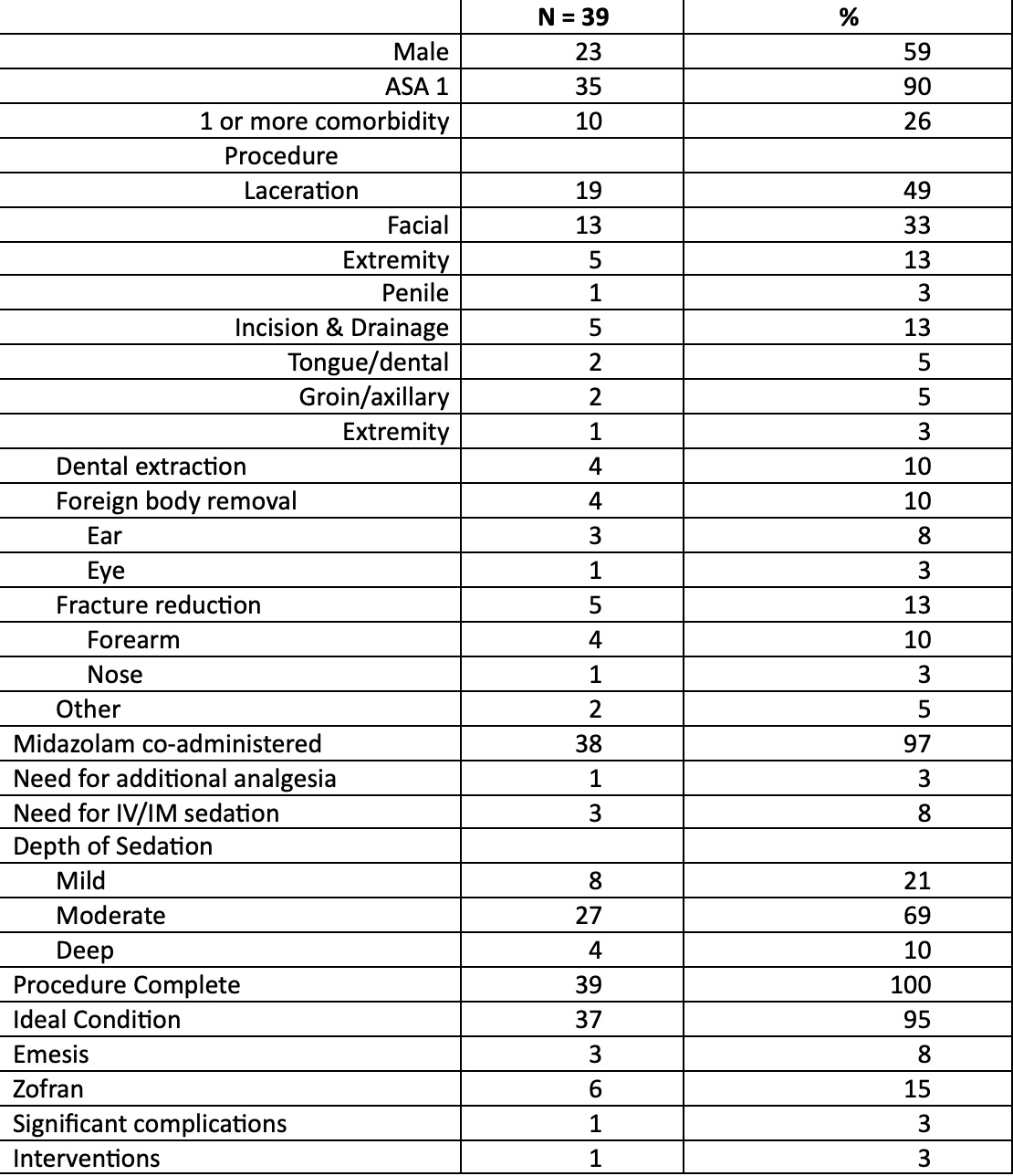Sedation Medicine
Session: Sedation Medicine
83 - Moderate Sedation with Oral Ketamine and Midazolam in the Pediatric Emergency Department
Saturday, May 4, 2024
3:30 PM - 6:00 PM ET
Poster Number: 83
Publication Number: 83.1437
Publication Number: 83.1437

Jeannine Del Pizzo, MD
Associate Professor of Clinical Pediatrics
Perelman School of Medicine at the University of Pennsylvania
Philadelphia, Pennsylvania, United States
Presenting Author(s)
Background: Needle-free procedural sedation (PS) is an attractive option for children presenting to the emergency department (ED) who require a painful procedure, as it avoids inflicting additional pain either with intravenous (IV) line placement or intramuscular (IM) injection. While use of oral ketamine has been most frequently utilized in dental and anesthesia settings, limited information is available to guide ED-based use.
Objective: The objective is to describe a single institution's experience of using oral ketamine and midazolam for moderate sedation in the pediatric ED.
Design/Methods: This is a descriptive study of the patient experience with a regimen that included a one-time dose of oral ketamine 6 mg/kg (max of 200 mg) plus oral midazolam 0.5 mg/kg (max 15 mg) approximately 20-30 minutes before a procedure. We performed a retrospective chart review of children younger than 18 years of age seen at an urban tertiary care children’s hospital ED and affiliated suburban community hospital ED from January 1 to June 30, 2023 where a clinician documented administering oral ketamine for procedural sedation.
Results: 39 children were sedated with oral ketamine during the study period, for the procedures listed in table 1. 59% (23) were male with a median age of 4 years. 75% (29) had no significant past medical history and 90% (35) were assigned an American Society of Anesthesiologists Physical Status score of 1. 38 children received oral midazolam along with oral ketamine; of those 38% (15) had the medications administered simultaneously and 69% (27) within 5 minutes of each other. 3 patients received additional ketamine (2 IV and 1 IM) due to inadequate sedation with the oral regimen alone. Sedation depth was clinician-reported as moderate 70% (27), mild 21% (8), and deep 10% (4). Procedures were completed in all 39 cases, and 95% (37) documented as ideal condition.There was 1 complication during the sedation (partial upper airway obstruction). 3 (7.7%) patients vomited during sedation recovery. One child with a seizure history experienced a seizure at home after discharge.
Conclusion(s): In this retrospective, observational study, procedural sedation with oral ketamine and midazolam was effective for needle-free moderate sedation in the pediatric ED, with 92% of the procedures completed without any additional IV or IM medications and the majority documented as ideal condition. Complication rates were low. Further prospective studies on oral ketamine use in the pediatric ED patient should include a discrete measure of sedation duration as well as independently-rated sedation level and procedural success.

